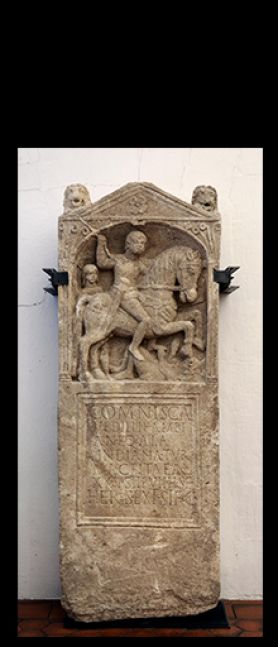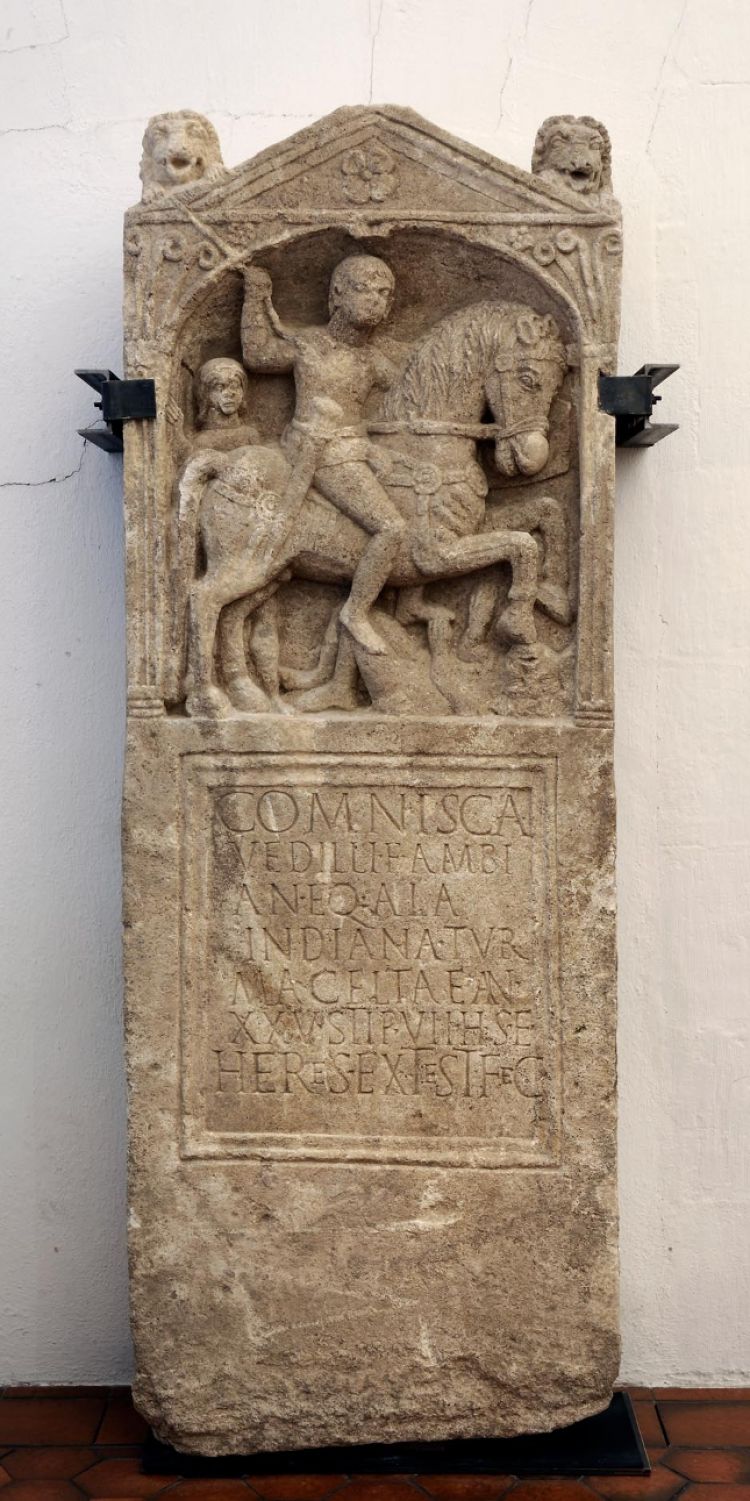Funerary stela of Comnisca

The Gallo-Roman soldier Comnisca, from the region of Amiens in the territory of the Ambiani enrolled in the Roman army, where he joined the troops of the auxiliary cavalry of the 2nd Augustan legion then stationed at Strasbourg-Argentorate. Each legion had squadrons of approximately 120 horsemen. In the organisation of the Roman army the cavalry was an important tactical and strategic mobile unit, to which numerous missions could be assigned.
The inscription engraved on the lower part of the stele gives us information on his identity. Comnisca, son of Vedillus, belonged to the Ala Gallorum Indiana, a cavalry unit taking its name from its first commander, the Treverian Julius Indus (this is the first known mention of his name). Comnisca was enrolled in a squadron under the authority of Celta. After 7 years of service in the Roman army, he died at the age of 25, was cremated and his ashes buried alongside his brothers-in-arms in the legionary necropolis of Koenigshoffen. This stela, erected by his heir and executor, was placed over the grave. It represents him in his military functions as a victorious horseman, his horse overturning and crushing a vanquished barbarian warrior. Standing behind him is his henchman, ready to hand him a spear for combat. This iconographic type was very popular in 1st century AD funerary art in the Rhineland.
